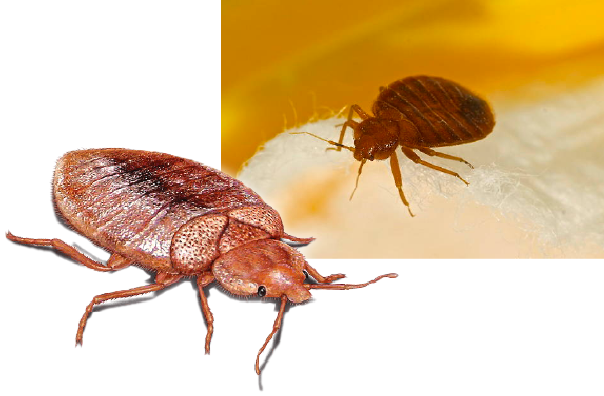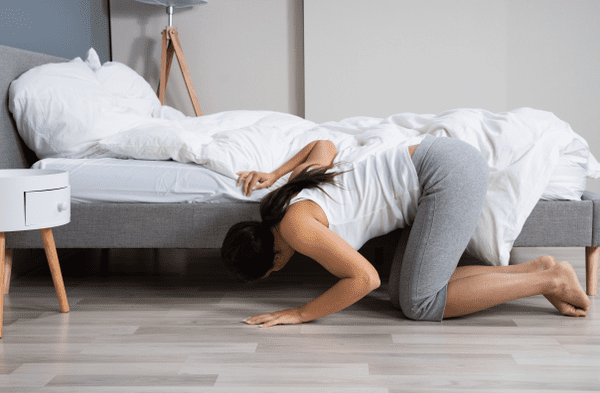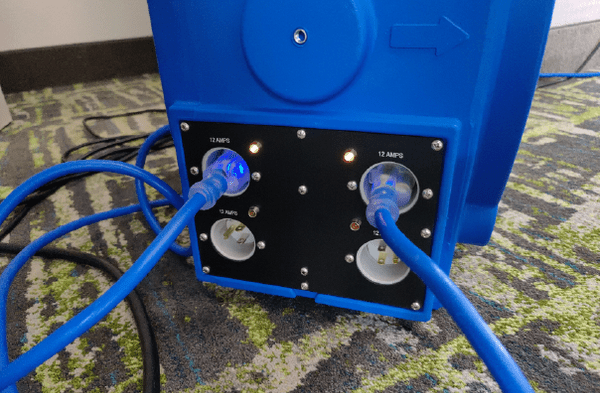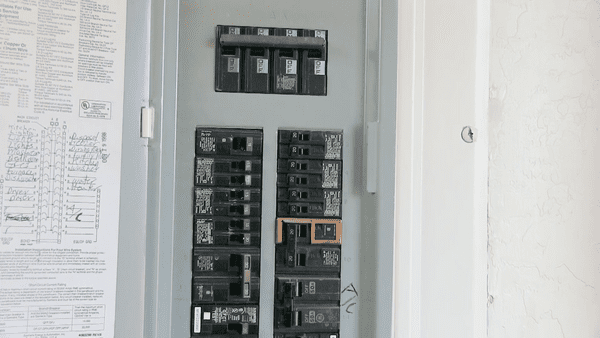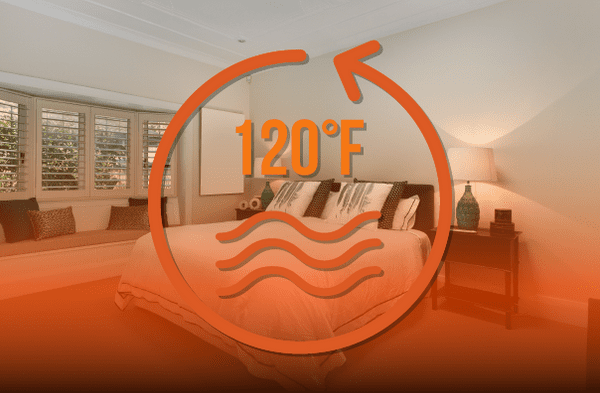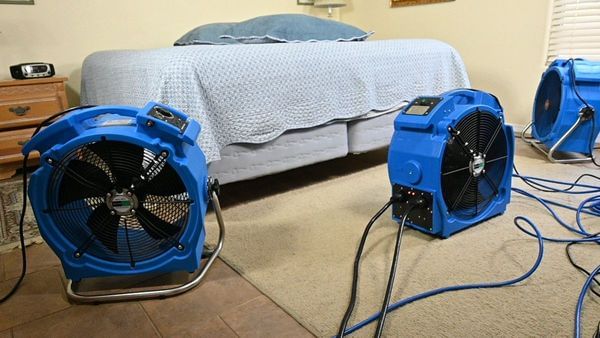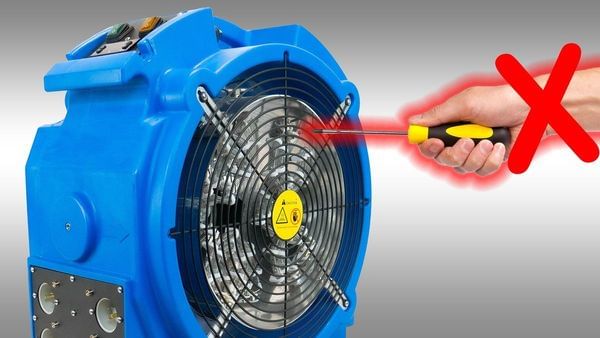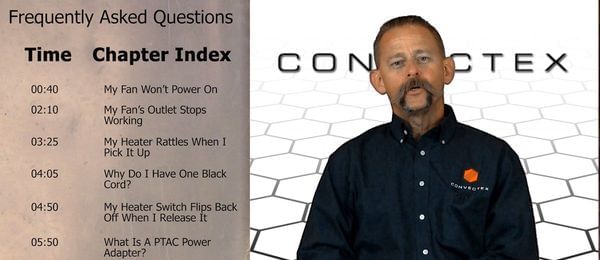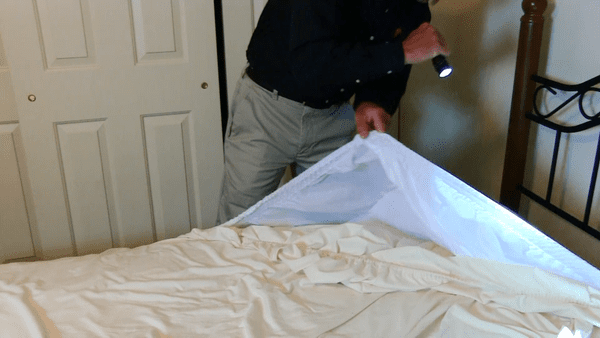THE COMPLETE DIY GUIDE
How to Treat Bed Bugs with Heat at Home
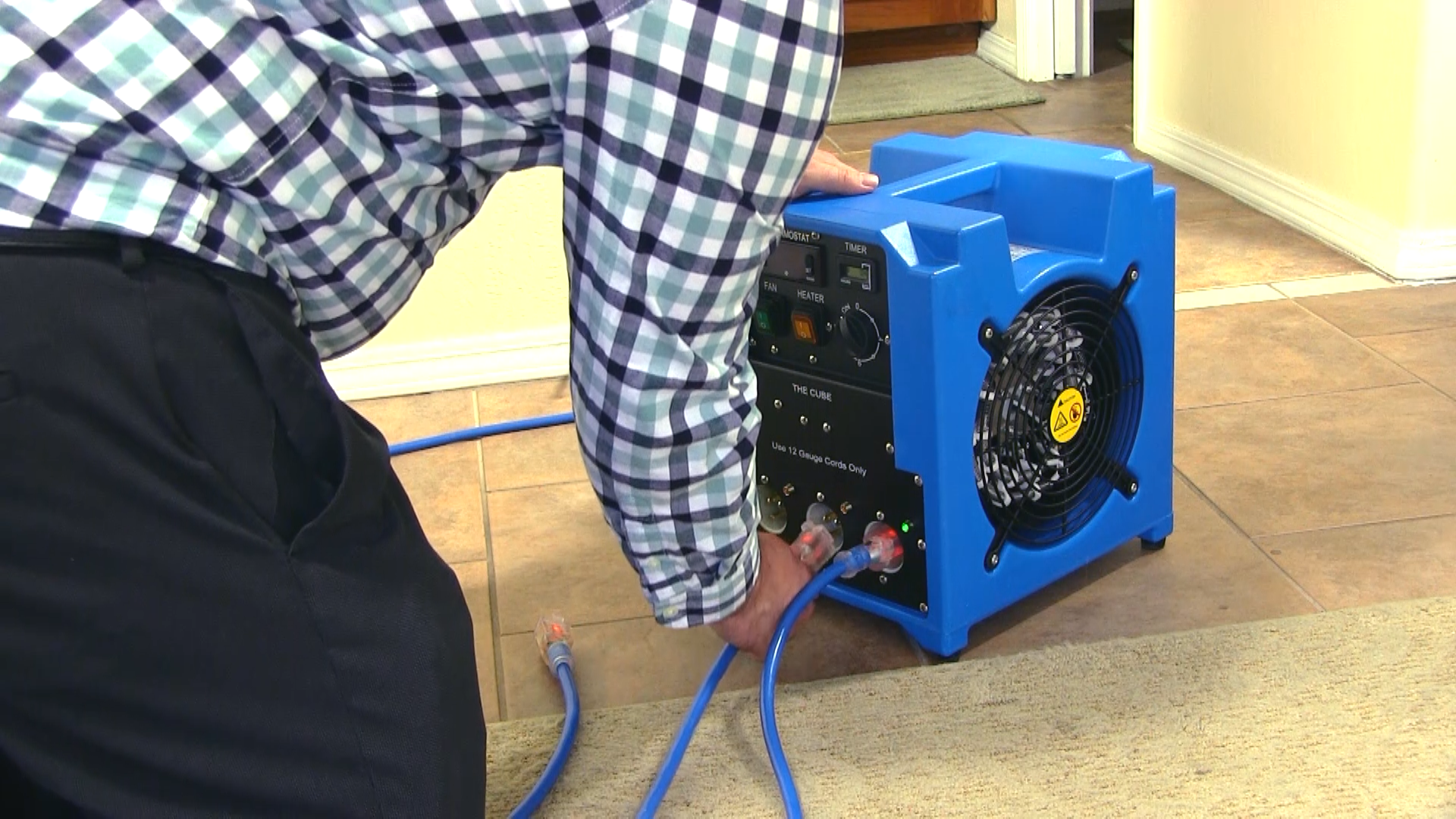
DIY Bed Bug Heat Treatments
Without question, top experts recommend heat as the best way to kill bed bugs. However, a professional bed bug heat treatment can cost thousands of dollars and disrupt your schedule and routines. But, did you know you can kill bed bugs, with heat, yourself?
If done correctly, a DIY bed bug heat treatment is the quickest, most effective, and affordable method to get rid of bed bugs.
Keep reading and join the thousands of homeowners throughout North America who trust Convectex for their Bed Bug Heater equipment and supplies.
Did you know the national average cost for a professional home heat treatment is around $1 per square foot? For example, a 2500 sq ft home could cost about $2500 for professional treatment. Unfortunately, most pest control companies offer a limited or NO WARRANTY to boot!
You will save considerable money by performing your own heat treatments!
When you buy your equipment, you can typically recover its cost in as little as one or two treatments because you're not paying a professional. More importantly, you now have the equipment and can re-treat your home anytime you like. It's always there for you when you need it.
Our environmentally friendly DIY bed bug heater and fan packages treat homes, apartments, and hotels, all while eliminating the need for harsh and sometimes dangerous chemicals. DIY heat treatments have no odors, stains, or waiting long periods for chemicals to dry. After cooling, the treatment areas are safe for people and pets to re-enter.
Regular people can now purchase professional-grade bed bug treatment heaters and fans at a price similar to the cost of a single professional heat treatment.
With the proper equipment, bed bug heat treatments are incredibly safe and effective for the DIY'er in:
 SINGLE-FAMILY HOMES
SINGLE-FAMILY HOMES  APARTMENTS
APARTMENTS  CONDOMINIUMS
CONDOMINIUMS  HOTEL/MOTEL ROOMS
HOTEL/MOTEL ROOMS  HOSPITALS
HOSPITALS  SENIOR HOME FACILITIES
SENIOR HOME FACILITIES  OFFICE SPACES
OFFICE SPACES  ETC
ETC
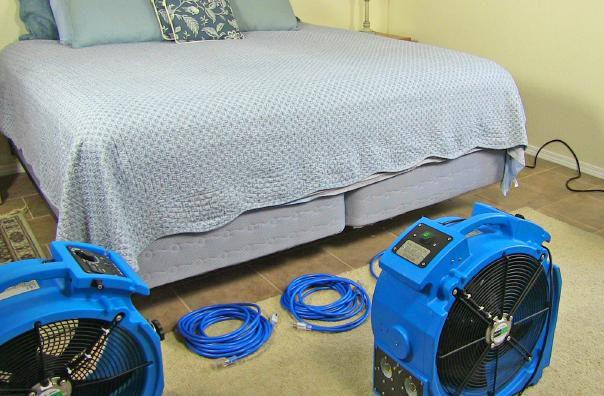
Heat kills bed bugs by overheating and breaking down the bugs' biological systems. The higher the temperature, the quicker this breakdown occurs. Because the heat penetrates every surface in your home, there is nowhere to hide. At temperatures above 113 degrees Fahrenheit, bed bugs
will start to die.
The optimal temperature to eliminate bed bugs is between 120 degrees and 130 degrees Fahrenheit. These temperature will need to be held from 2 to 24 hours depending on the levels of infestation and clutter.
Below is a step-by-step guide for killing bed bugs yourself with heat using our tried-and-true bed bug eradication heaters and fans. This process was developed by CONVECTEX through many years and thousands of professional heat treatments for bed bug heat and bed bug inspection services.
Step 1: Inspect Your Home for Bed Bugs
To successfully exterminate bed bugs, you must first start with a thorough home bedbug inspection. The goal of an inspection is:
1) Confirm if the bugs you are seeing are, in fact, bed bugs; and
2) Determine where in the home they are located.
If you've captured a bug and want to know if it's a bed bug, you'll need to rule out lookalikes. People mistake other bugs for bed bugs, and this can be an expensive mistake. Rule out the most commonly mistaken bugs before calling a pest professional in a panic. Here is a guide to common lookalike bugs.
Adult bed bugs are approximately 1/4 inch long and are reddish-brown in color. They can be seen easily with the naked eye, but you may also find bed bugs in different developmental stages, such as eggs and nymphs. These different stages can offer clues as to the severity of the infestation in your home.
When the adult female lays eggs, they are attached to surfaces with a sticky substance. These eggs are difficult to see with the naked eye.
The bed bug has five stages before reaching adulthood, called nymphs or instars. The process from egg to adult takes 24-36 days, depending on temperature. Check out our guide to Identifying Bed Bug Life Stages.
When the adult female lays eggs, they attach to surfaces with a sticky substance. These eggs are difficult to see with the naked eye.
Bed bugs like warm tight spaces, so pay close attention to small cracks or crevices and folds of fabric or cracks in furniture. Don't forget to look underneath furniture and in drawers and places in and around areas where humans sit or sleep for extended periods, such as:
 Couches
Couches  Recliners
Recliners  Office Chairs
Office Chairs  End Tables
End Tables  Nightstands
Nightstands
Also, check around the edges of rooms, along baseboards and carpet, and curtains and drapes.
If your inspection cannot confirm the presence of bed bugs, but you are still getting bites, consider hiring a K-9 detection team. These highly trained dogs search for traces of bed bugs and can smell them even where you can't see them.
Carefully inspecting your home will help you determine the degree and size of your infestation and where to focus the bed bug heat treatment.
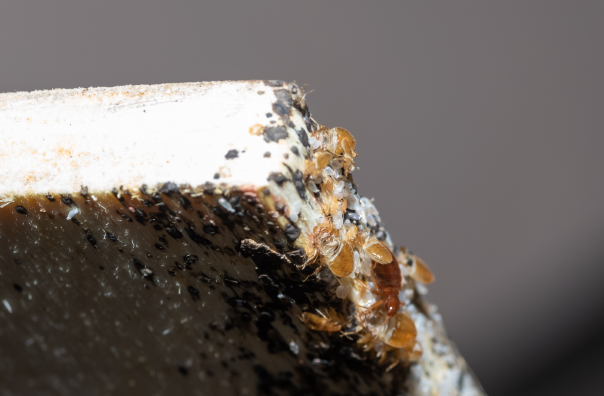
Step 2: Determine the Amp Value of the Circuits in a Your Home
If you've confirmed that you have a bed bug problem, your next step is to determine what Heater System will work best in your homes power requirements.
Electric Bed Bug Heaters are typically best for most cases because they are very effective, easy to use, and have the most safety features.
When choosing an electric bed bug heater system, you will need to evaluate your home's electrical system and determine the number of circuits available to power the system.
First, you need to find your home's breaker panel. They are usually outside the house for a single-family homes or in the master bedroom or laundry room for other homes.
When you find it, open the door and look at the breakers. You'll see a numeric value on each switch, which is the amp value for that circuit. This number will tell you how much power is available in that breaker and if it can handle the heaters' demand.
Your next step is to figure out how many circuits you need to power the package you are using.
WARNING! Do not use our heaters in homes or structures with non-upgraded power / wiring, push-in or screw-in fuses, or aluminum wiring. These outdated electrical wiring practices were typically found in homes and structures built before 1978. Please consult a licensed electrician for more information of verification of your structures power requirements before use.
How to Figure Out How Many Circuits You'll Need to Use
An electric heater is typically composed of a fan and heating coils. The fan blows air across the coils to heat the air. Each of these coils demands a lot of electricity and usually requires a separate power cord (110v). For example, a heater with four heating coils will require four power cords.
Some heaters use a larger single cord, commonly called a 240v plug, to power multiple coils, so paying attention is essential.
When selecting the best Heater System for your home, you need to figure out how many different circuits you'll need to power the number of heat coils in the system.
For example, suppose you’re using the Bed Bug Buster Pro C4 Heater. To power this heater in its entirety you will need four separate 15 or 20 amp (110v) circuits. When using the Elite 33K Hypro Bed Bug Heate you’ll need four 15 or 20 amp circuits plus two 20 amp circuits at (110v). Alliteratively you would need eight 15 amp circuits at (110v). Keep in mind you will only need to power as many individual heating elements needed for the size area you are treating.
How to Step Down 240V to 120V
Some homes do not have enough 15 amp or 20 amp circuit breakers to power the electric heater. But, if you have a 240V outlet, you can use a Turtle Box Distribution Kit to convert the outlet into four 110V outlets and power the electric bed bug heater. The 240-Volt plug is typical for an electric stove or dryer and is larger and has a different plug configuration. This configuration offers a more manageable and compact power system that is often easier to set up than using multiple power cords to draw power from numorous outlets across a structure.
Step 3: Select the Best Heater for Bed Bug Treatments In your Home
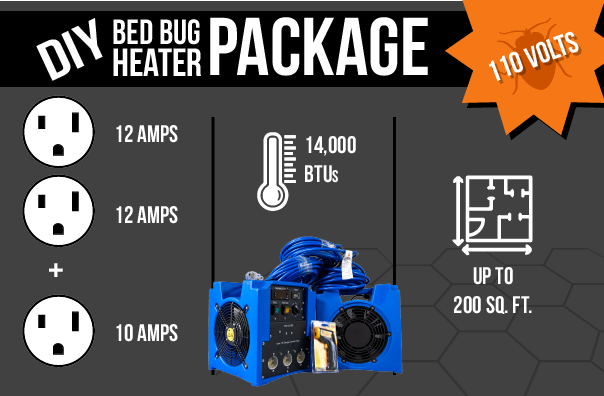
When choosing a bed bug heater, you need to select a machine that matches your home's electrical capacity. A bigger heater can treat larger spaces in a single treatment, so you want to choose the largest system possible considering your homes power availabilities.
Fans are critical for heat treatment because they circulate the heated air and use convection to force heat into the spaces where bed bugs live. Adding fans can increase the capacity of the heater to treat a larger area.
Here are some bed bug heat packages most used by homeowners:
Option 1: 110 Volt DIY Bed Bug Heater Package
 Power Requirements: 110 Volt
Power Requirements: 110 Volt  3 Heating Elements (2 X 12 amps/ 120 Volt and 1 X 10 amps/ 120 Volt )
3 Heating Elements (2 X 12 amps/ 120 Volt and 1 X 10 amps/ 120 Volt )  BTUs: 14,000
BTUs: 14,000  Heated Space: Up to 200sqft
Heated Space: Up to 200sqft  Intended Users: Homeowners and hotel owners performing spot heat treatments or in a room of 200sqft or less
Intended Users: Homeowners and hotel owners performing spot heat treatments or in a room of 200sqft or less
The 110 Volt DIY Bed Bug System is affordable and easy to use. Its internal fans make it usable alone, or you can add multiple fans for better convection and results. It's best suited for spot-treating samller areas (200 square feet and under) in residences and businesses.
Option 2: BED BUG BUSTER PACKAGE SALE
 Power Requirements: 110 Volt
Power Requirements: 110 Volt  4 Heating Elements (4 Draw 12 amps/ 120 Volt)
4 Heating Elements (4 Draw 12 amps/ 120 Volt)  Twist Lock Power Cords
Twist Lock Power Cords  BTU's: 20,478
BTU's: 20,478  Heated Space: Up to 400sqft
Heated Space: Up to 400sqft  Intended Users: Homeowners and hotel owners performing spot heat treatments or in a room of 650sqft or less
Intended Users: Homeowners and hotel owners performing spot heat treatments or in a room of 650sqft or less
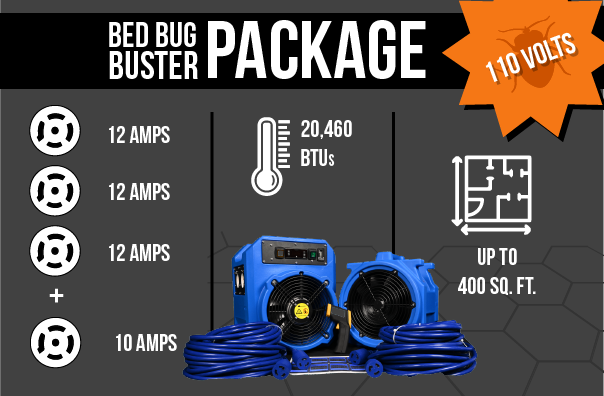
The BED BUG BUSTER PACKAGE SALE is affordable and easy to use. The heaters' internal fans makes it usable alone, however we added a fan for better convection and results. It's best suited for spot-treating areas (400 square feet or less) in residences and businesses with 15 amp circuits.
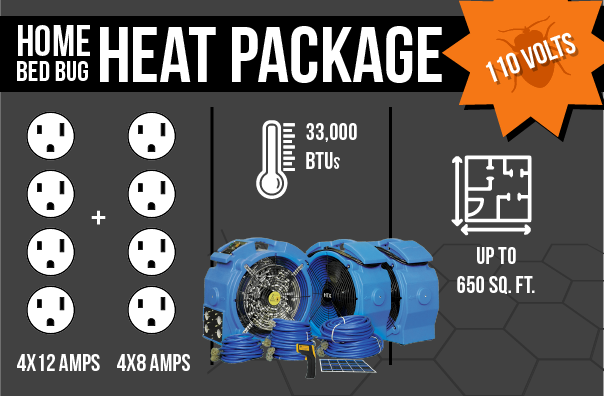
Option 3: Home Bed Bug Heat Package (BEST OPTION FOR MOST HOMES when the
33K Heater option is chosen)
 Power Requirements: 110 Volt
Power Requirements: 110 Volt  8 Heating Elements (4 Draw 12 amps/ 120 Volt and 4 Draws 8 amps/ 120 Volts)
8 Heating Elements (4 Draw 12 amps/ 120 Volt and 4 Draws 8 amps/ 120 Volts)  Maximum Air Movement / Convection
Maximum Air Movement / Convection  BTUs: 33,000
BTUs: 33,000  Heated Space: Up to 650sqft
Heated Space: Up to 650sqft  Intended Users: Homeowners and hotel owners performing spot heat treatments or in a room of 650sqft or less
Intended Users: Homeowners and hotel owners performing spot heat treatments or in a room of 650sqft or less
The Home Bed Bug Heat Package is economic and simple to use. This package is our recommended option for most homes treating areas (650 square feet or less). The extra fans in this package are critical in terms of air circulation and high convection rates to allow heat to reach the bugs in the tough spots such as under carpets.
Step 4: Prep Your Home for the Bed Bug Heat Treatment
Preparing your home for a bed bug heat treatment is essential for success. Keep the following objectives in mind when preparing:
 The goal is to bring the room and its contents to a minimum temperature of 120 degrees and maintain this temperature for 2 to 24 hours.
The goal is to bring the room and its contents to a minimum temperature of 120 degrees and maintain this temperature for 2 to 24 hours.  Create convection by using fans to circulate the heated air.
Create convection by using fans to circulate the heated air.  Address piles and clutter that do not heat evenly.
Address piles and clutter that do not heat evenly.  Never spray repellant bed bug chemicals or foggers. See below for Do's and Don’t.
Never spray repellant bed bug chemicals or foggers. See below for Do's and Don’t.
Some Quick Don’ts and Do's Before Bed Bug Treatment
Until you can treat the bed bugs, there are some dos and don'ts that you should follow to ensure that you don't worsen the problem.
 Don't - throw out your mattresses or furniture if you suspect they are infected. You will be throwing away expensive items, but you are also likely to spread bed bugs and their eggs throughout your home as you transport them outside.
Don't - throw out your mattresses or furniture if you suspect they are infected. You will be throwing away expensive items, but you are also likely to spread bed bugs and their eggs throughout your home as you transport them outside.  Do - use bed bug encasement's on your mattresses and pillows. These will prevent bed bugs from getting inside or those already in there from being able to bite you while you sleep.
Do - use bed bug encasement's on your mattresses and pillows. These will prevent bed bugs from getting inside or those already in there from being able to bite you while you sleep.  Don't - Don't move infested furniture from one room to another - this only spreads the infestation.
Don't - Don't move infested furniture from one room to another - this only spreads the infestation.  Do - launder any items such as clothing or a stuffed animal through a hot dryer or wash cycle (at least 120˚F) to kill anything first.
Do - launder any items such as clothing or a stuffed animal through a hot dryer or wash cycle (at least 120˚F) to kill anything first.  Don't - spray or apply any over the counter repellant chemicals or foggers. These can severely disperse a bed bug infestation into hard-to-treat areas such as well voids, under carpets, and or adjoining apartment units.
Don't - spray or apply any over the counter repellant chemicals or foggers. These can severely disperse a bed bug infestation into hard-to-treat areas such as well voids, under carpets, and or adjoining apartment units.
Bed Bug Heat Treatment Preparation List
 Before heat treatment, do not use any pesticide bombs, foggers, sprays, or dust.
Before heat treatment, do not use any pesticide bombs, foggers, sprays, or dust.  Do not remove anything from the treatment area except for items such as plants, pets, candles, etc. If possible, place items in sealed garbage bags.
Do not remove anything from the treatment area except for items such as plants, pets, candles, etc. If possible, place items in sealed garbage bags.  Pull furniture 4 to 6 inches away from walls to allow air to flow behind.
Pull furniture 4 to 6 inches away from walls to allow air to flow behind.  Excessive piles of linens or clothing should be sealed in bags, left in the treatment area, and then separately washed and dried on the highest heat setting.
Excessive piles of linens or clothing should be sealed in bags, left in the treatment area, and then separately washed and dried on the highest heat setting.  Unplug all electronics except major appliances..
Unplug all electronics except major appliances..  Any items (clothing, shoes, valuables) taken out with the occupant on a day of heat treatment must be thoroughly inspected and sanitized before being re-introduced to the treated area.
Any items (clothing, shoes, valuables) taken out with the occupant on a day of heat treatment must be thoroughly inspected and sanitized before being re-introduced to the treated area.  Improperly secured pictures may blow down and should be taken down and laid flat.
Improperly secured pictures may blow down and should be taken down and laid flat.  Vinyl or faux wood blinds have a low heat tolerance; lay them flat to avoid warping.
Vinyl or faux wood blinds have a low heat tolerance; lay them flat to avoid warping.  The treatment uses High power fans during this process; secure loose papers so they don't blow around.
The treatment uses High power fans during this process; secure loose papers so they don't blow around.
Heat Sensitive Items
It's important to remove items that might be sensitive to heat. However, before removing items, everything must be INSPECTED, SANITIZED, and PLACED IN A SEAMLESS PLASTIC CONTAINER and either placed in the refrigerator or removed from the treatment area. Here are some items to consider:
 Remove all plants and pets.
Remove all plants and pets.  Remove melt-able items like chocolate, lipstick, candles, crayons, and deodorants.
Remove melt-able items like chocolate, lipstick, candles, crayons, and deodorants.  Remove aerosol cans, fire extinguishers, lighters, soda cans, and pressurized containers.
Remove aerosol cans, fire extinguishers, lighters, soda cans, and pressurized containers.  Remove wines, liquors, perishables, medications & vitamins, and vinyl records.
Remove wines, liquors, perishables, medications & vitamins, and vinyl records.  Remove items assembled with hot melt glue.
Remove items assembled with hot melt glue.  Remove printers, wireless routers, and batteries.
Remove printers, wireless routers, and batteries.
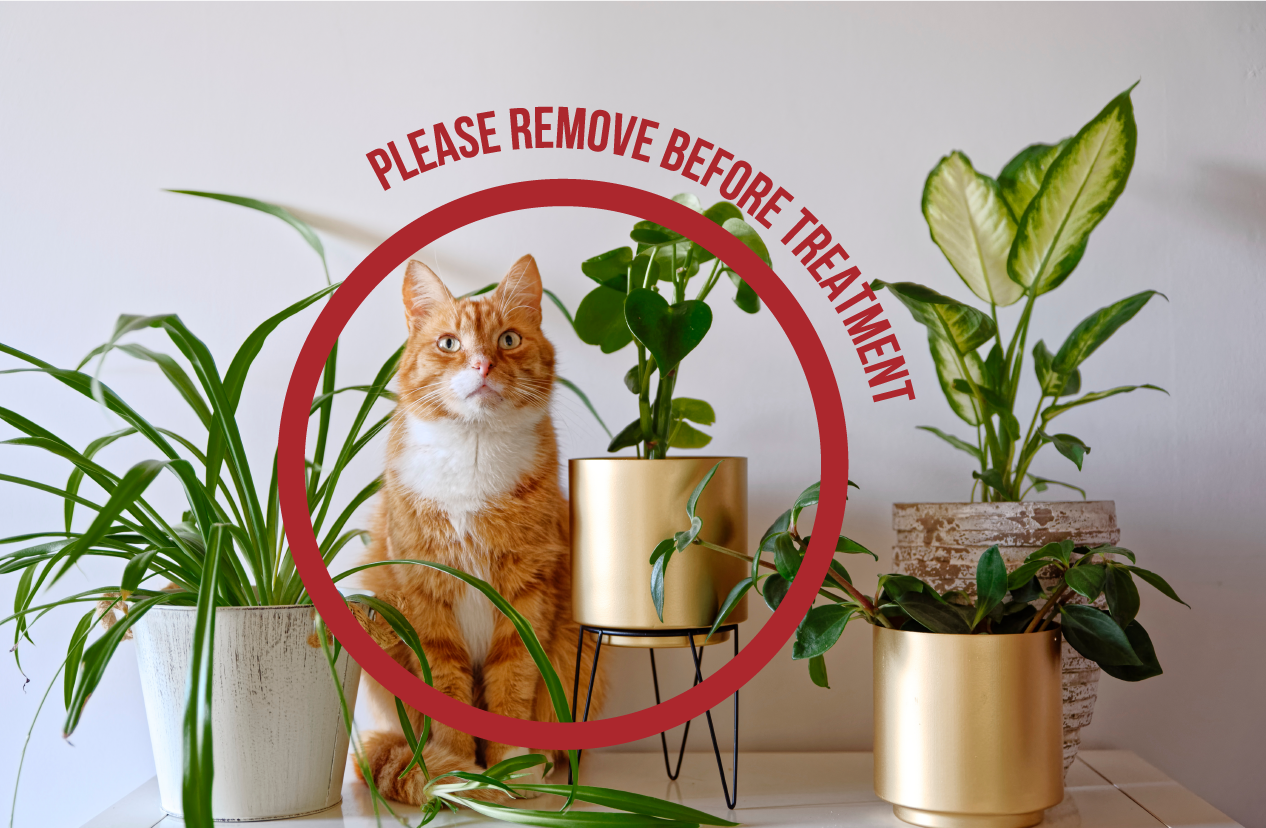
Step 5: Set Up and Plug-In Your Heaters
Set up your bed bug heater equipment to maximize airflow and circulation. Like a convection oven, the fast-moving hot air forces heat into the nooks and crannies where the bugs live. High air flow also helps speed up the heating process through convection. Keep these general concepts in mind when setting up your bed bug heat treatment equipment.
Your heater will typically have a long black power cord built into the machine. This plug powers the fan. It also has a group of standard three-prong plugs on the side of the heater where you can plug in an extension cord. These plugs power the heater coils in the machine and typically require 8 or 12 amps of electricity.
It is crucial to use extension cords rated for the plug's required amps. An undersized extension cord can overheat. Always use the power cords that came with the heater package. If you need to replace a power cord,
check here.
For example, the Bed Bug Buster Pro C4 Bed Bug Heater uses four blue twist lock extension cords that plug into the heater that power heater coils. These blue cords are for 110V, so you need to be careful to only plug them into your standard wall outlets. Each coil will draw 12 amps of 110/120volt power.
Remember, each circuit breaker should only have one blue cord plugged into it!
You might have multiple wall outlets in your room, but they are likely all going to the same circuit breaker, so you will need to spread the blue extension cords to different rooms. If you're unsure where the circuits are, go back to the breaker panel and look since there should be labels for each breaker.
Similarly, if you use the Elite 33K Heater, you'll have a similar set-up but you will need more circuit breakers. For this machine, 4 of the blue power cords will each draw 8 amps @ 110/120volts. The other 4 cords will draw 12 amps @ 110/120volts. You can plug two 8 amp blue power cords into one 20 amp circuit (use multiple outlets) because the combined draw will be 16 amps so you will need 2 x 20 amp breakers for one side of the machine. The 12amp side will require at least 4 x 15 or 20 amp 110/120volt breakers.
This process can be confusing, so please don't hesitate to call our experts if you have questions!
Call Today - 877-375-0005
Remember, to make sure each plug is pushed tightly at the wall and into the heater units themselves.
Once you're sure you have divided up the power to different circuits and have everything plugged in securely, you're ready to continue with the bed bug heat treatment.
Bed Bug Heat Treatment Best Practices
At this point, you are ready to turn on the bed bug heat treatment equipment and start treating. Here are some essential things to consider during the process.
1. Always try to seal the room(s) from escaping heat—especially HVAC vents, lights, bathroom exhaust fans, bottoms of doors, wall air-conditioners, etc.
2. Cover windows pane with blankets or equivalent to minimize heat loss from cold windows.
3. Remove items you would not typically leave in your car on a hot sunny summer day—candles, lighters, many foods, candies, etc. DONT PROP / TEEPEE THE BED AND BOXSPRING BEFORE TREATMENT! THIS WILL DISPERSE THE BED BUGS!
4. Unplug electrical items and don't put them in front of the heater or fans. These items can usually handle higher temperatures than what the heater gives off, but it's best to avoid the heat coming directly from the heater to minnimize the risk of damage.
5. Bag clothes and sheets, and run them in the clothes dryer on high for 45 minutes. Never leave clothes lying on the floor or other surfaces, as they
will impede heating.
6. Open all drawers and separate all items so hot air can get everywhere quickly.
7. Place all fans blowing in the same direction along the walls in the area you are heating to circulate the hot air into every nook and cranny. If possible, place at least one fan per wall. Turn on fans to ensure air movement is sufficient.
8. Place heater(s) to sweep up the hot air by the fans and circulate the room. Avoid having hot air hitting any furniture or building materials directly before being blown about by the fans.
9. For maximum performance, use one heater for every 150 sqft in a standard room with a 9' or less ceiling height.
10. Turn on heaters and make sure all power cords are plugged in and the cord lights are on. Heater coils will not heat if you do not have power connected.
11. Always check for fire sprinklers installed in a building. Keep the heat level at the fire sprinkler head a minimum of 30F below the trigger temperature of the fire sprinkler.
12. Walls and ceilings made of block or concrete require more heat because they are more conductive than drywall. This means one heater will heat less space when you have walls and/or ceilings with block or concrete. 50% more power is a general rule for these rooms.
Keep in mind after the bed bug heat treatment:
1. The treatment area will be hot, so move items around to distribute the heat evenly. You can open windows and use fans to cool the room down as needed.
2. Wait to turn the AC on until AFTER the treatment area reaches a safe temperature of 98 degrees. If you turn on the AC too soon, condensation can appear on your ceilings and damage your AC unit.
3. Dry ALL the clothes worn on the day of treatment for at least 45 minutes before re-entering the treatment area.
4. Bed Bugs may take up to two weeks to fully die off after the treatment. Most bugs will die immediately, don't be alarmed if you find a few live bugs after the treatment. If you see Bed Bugs after 2 weeks treat again!
5. Bed bug bites can appear up to two weeks after being bit, don't worry about any new bites for the first two weeks following the treatment.
Step 6: Re-inspect / Monitor
After bed bug heat treating, it's time to reinspect to ensure the bed bugs are gone. Follow the steps outlined in step one again. A Bed Bug Detection K-9 team will be most effective here.
1. Clean / disinfect all the surfaces in the home, particularly in the bathroom, bedroom, and kitchen. This cleaning won't directly kill the bed bugs, but it'll remove any hair, dust, or dirt kicked up during the heat treatment.
2. Vacuum your sleeping areas. While you don't have to vacuum your sleeping area for it to be usable, it's likely to give you peace of mind. Strip your bed, vacuum your mattress and pillows, and mattress topper if it's too large to fit in the washer. Put all your bedding through a wash and and dry cycle.
3. Inspect your home at least every month or so for the first year. It's important to try figure out how you got bed bugs in the first place. Try and identify pathways from which they may have come from, such as travel, used furniture, or house guests. A heat treatment will have killed any bed bugs in the home, but you can catch them again.
4. Take preventive measures to avoid further bed bug infestations. When you travel, inspect your hotel room before getting comfortable: look at the linens, mattress, bed frame, headboard, and bedside tables. Avoid putting your luggage on the floor or bed of a hotel. It's best to keep them on a luggage rack instead.
5. It's also best to avoid storing your belongings in hotel furniture like bedside tables or wardrobes.
6. Most importaintly if your bed bug treatments fail for any reason or you continue to get bed bugs please always feel free to call us directly for free customer support or treatment advice from one of our Bed Bug Heat treatment experts! 877-375-0005
Heat Treating for Bed Bugs Can Be Done Yourself
You might be on the fence about a DIY approach to bed bug treatments, but know many people are successful every day. Like all home projects, do your research, compare the pricing of all your options and ask lots of questions.
We are here to help!
Call Today
 877-375-0005
877-375-0005
